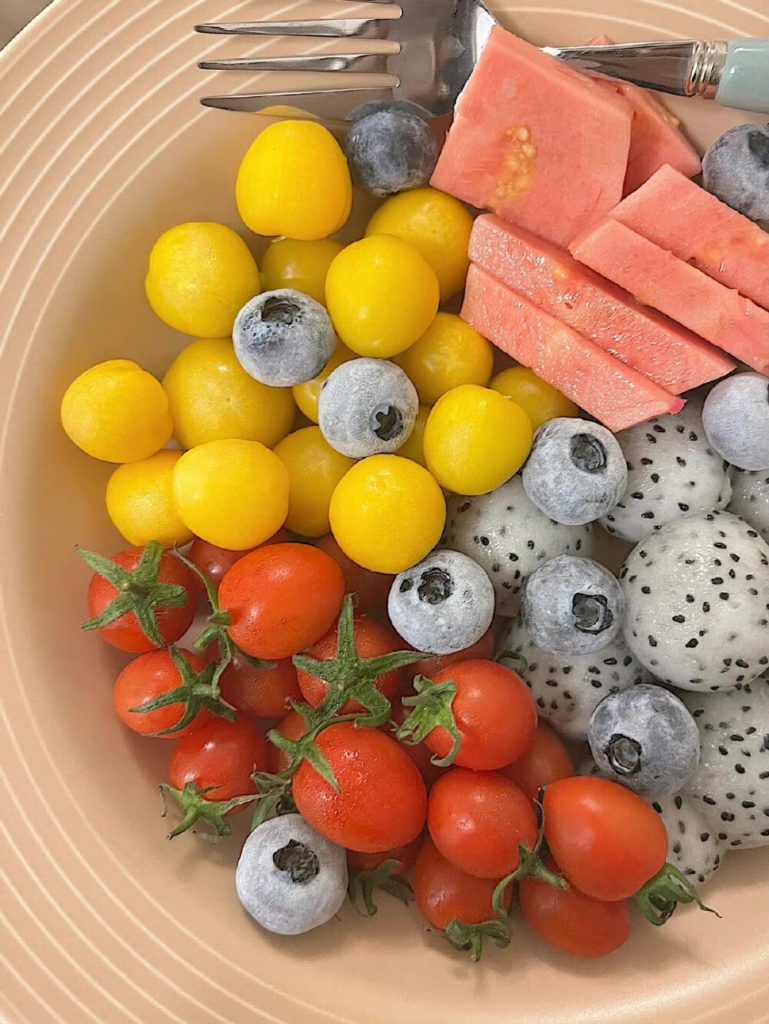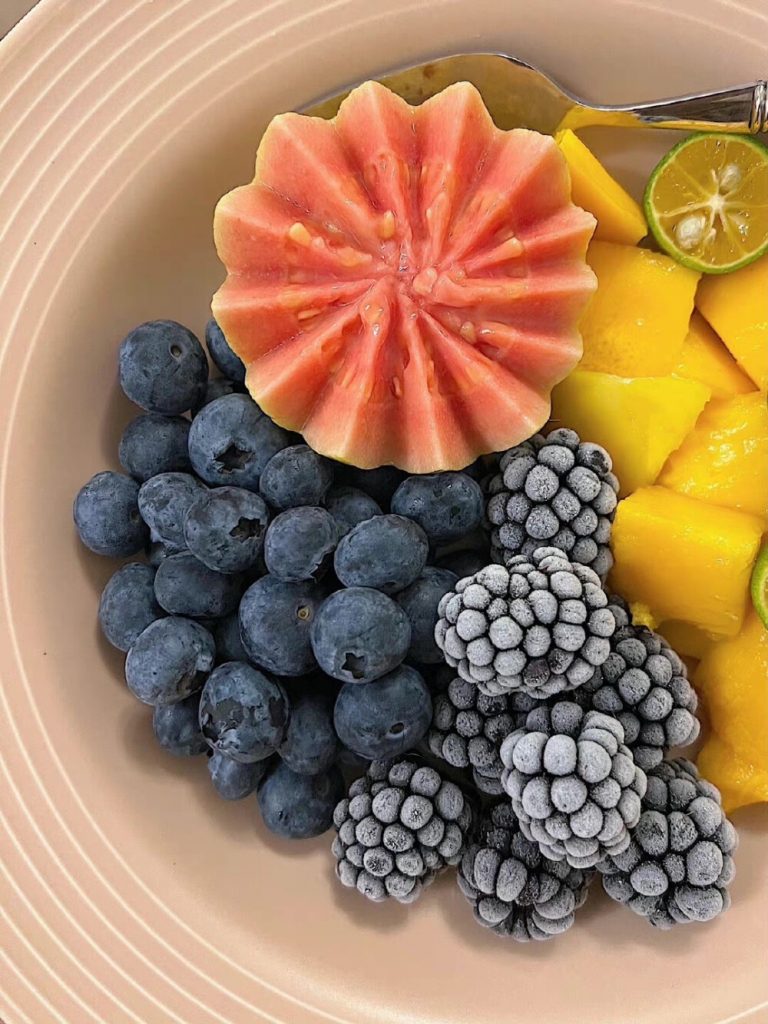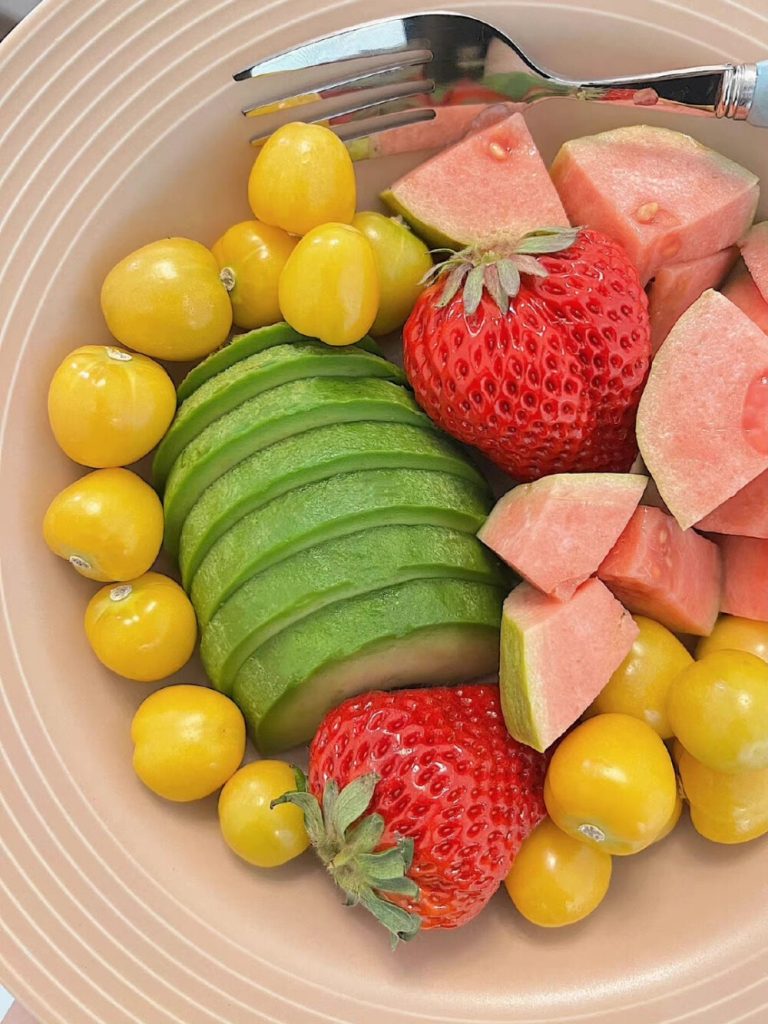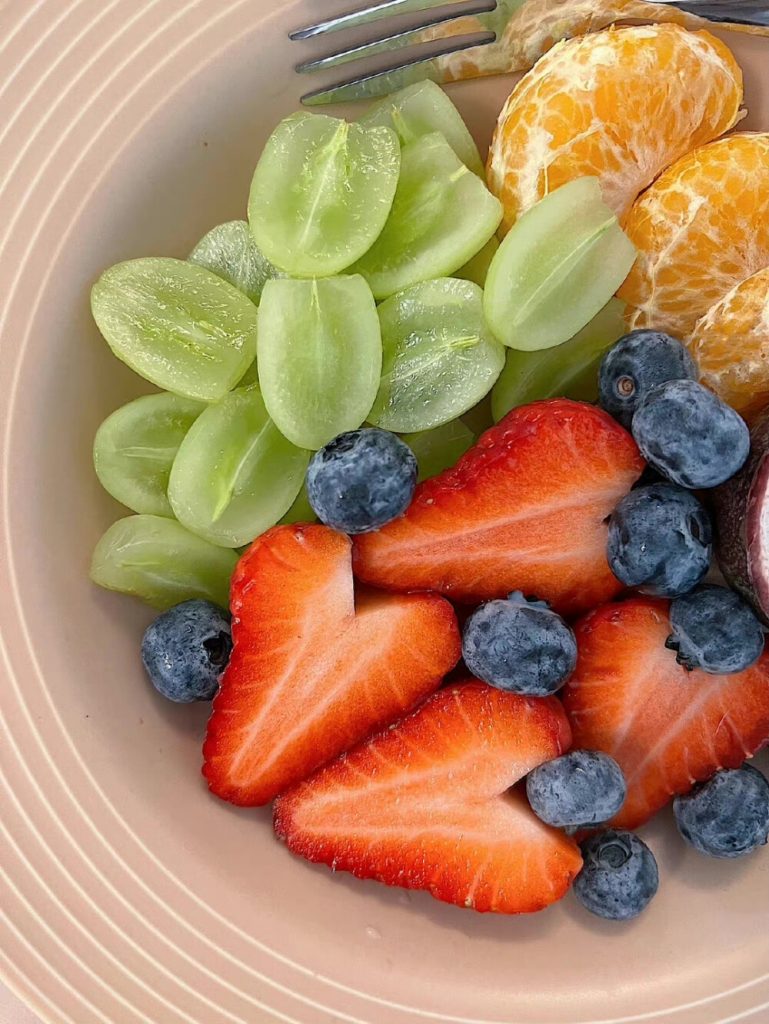
Children with fruits and vegetables
Colorful, crunchy fruits and vegetables are an important and enjoyable part of your child’s diet.
Both vegetables and fruits contain essential nutrients that are vital to their health, growth and development.
If you eat and enjoy fruits and vegetables with your children every day, they will often follow your lead.
Children learn by example

Most babies eat fruits and vegetables as their first solid foods. After the first year, you may notice that your child is more picky about food as they become more independent eaters. Typically, food cravings include fruits and vegetables.
But Parents may be concerned if their child starts eating less fruits and vegetables from time to time, but this usually doesn’t cause harm.
It is impossible to force children to eat more fruits and vegetables. The best approach is for parents to make fruits and vegetables a regular part of the family’s diet. It may take time, but it’s how children learn best. So keep up the good work.
Benefits of fruits and vegetables

Everyone loves eating a variety of vegetables and fruits for many reasons.
Vegetables and fruits may provide important vitamins such as vitamin C and folate. They also contain other plant substances that are thought to help reduce the risk of certain cancers and heart disease.
Encourage your child to eat more fruits and vegetables

If you follow healthy eating habits, your children may eventually follow your lead. Continue to offer fruits and vegetables in a variety of ways, as children are more likely to eat something familiar to them.
Never assume that your child doesn’t like a particular fruit or vegetable. They might decide to give it a try next time you offer it. Children’s tastes do change as they get older.
The 5 steps to success include:
Involve your children in food preparation and planning
Enjoy fruits and vegetables
Promotional meeting
Include fruits and vegetables in your meals whenever possible
Keep trying.
Involve your children in food preparation and planning

Suggestions include:
Let your child choose the fruit or vegetable they want.
Take your children shopping for fruits and vegetables and let them see, smell and feel the fruits and vegetables with you.
Have your child draw a picture and describe the food to you.
Let your children help wash and prepare fruits and vegetables. Use this opportunity to explore new colors and shapes.
Encourage their skills by letting them make a simple salad.
Count grapes or berries together into a bowl.
Grow some vegetables or herbs in the garden or in pots. Let your children water and nurture the plants.
Enjoy fruits and vegetables
Suggestions include:
Remember to eat with your children whenever possible. If your kids see you eating and enjoying a variety of fruits and vegetables, they’ll be more likely to join in.
Sometimes, children may prefer raw vegetables to cooked vegetables.
If mealtimes are stressful, your child may refuse new foods, so try to focus on the positive aspects of the meal and avoid arguments.
Introduction to fruits and vegetables
Suggestions include:
Keep a bowl of fresh fruit on hand. Keep vegetables like peas, cherry tomatoes, baby carrots, and mushrooms in the refrigerator for a quick snack.
Make vegetables and fruits look great on your plate. Offer different colored fruits and vegetables, chop them up for changing or put them on special plates.
For those who are reluctant to eat, try new fruits and vegetables once a week.
Include fruits and vegetables in your meals whenever possible
Suggestions include:
Incorporate vegetables and fruits into your diet in a variety of ways and with most meals and snacks.
Instead of looking for new recipes, try increasing the types or amounts of vegetables you add to your favorite family recipes, such as pasta sauces, soups, or stir-fries.
Fruit and vegetable snack suggestions
Include vegetables and fruits in snacks and meals. Try these snack ideas:
corn on the cob
Potatoes with skin on
Pumpkin Soup or Minestrone Soup
Regular homemade popcorn
Chopped vegetables with salsa or yogurt sauce
Muffins, cookies or cakes made with added fruits or vegetables
Frozen fruit or vegetable chunks
Fruit skewers
stewed fruit
Fruit crush
Juice canned fruit
Fruit salad or fruit platter.
Continue to provide fruits and vegetables
Suggestions include:
Children need opportunities to learn, or sometimes relearn, to enjoy fruits and vegetables. Your role is to make them available. Keep in mind that your child may need to see a fruit or vegetable 10 or more times before he or she is ready to try it.
Always put a small portion of vegetables on your child’s plate. Encourage them to try them, but let them decide whether to eat them.
Serve crunchy raw vegetables before the main meal, when kids are usually hungriest.
Try to avoid preparing alternatives to the meals you prepare. Your child may choose to keep certain foods, but if other foods are not offered, he will learn to accept what is offered.
Fruits and vegetables are healthy choices
All vegetables and fruits are healthy.
Fruits and vegetables can be any color, shape, texture or variety. They can be fresh, frozen, canned or dried. They can be raw, cooked, steamed, boiled, microwaved, stir-fried or baked.
Diversity matters. Try to choose fruits and vegetables of different colors, especially orange, green and red. Examples include melons, stone fruits, broccoli, spinach, leafy greens, tomatoes, carrots and squash.
Sometimes vegetables and fruits seem expensive. To keep costs down, choose varieties that are in season and use frozen or canned varieties.




